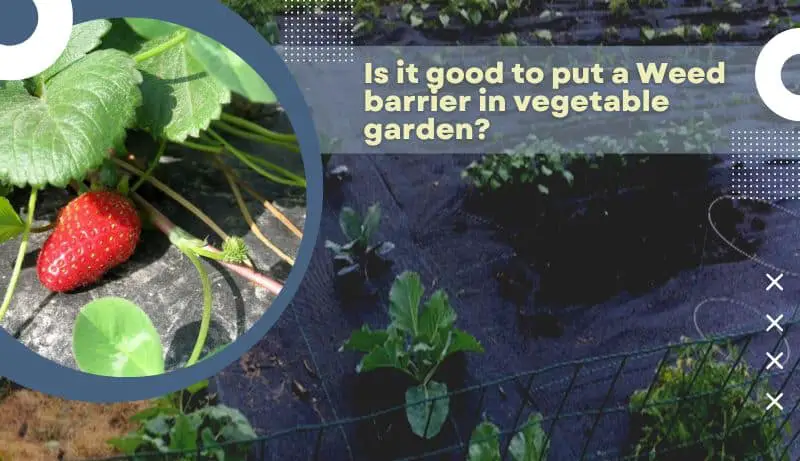Weeds are undoubtedly an inconvenience in any garden. Due to their competition for nutrients, space, sunlight, and water, weeds deprive our veggies of their resources.
In a vegetable garden bed, fertilizers and additives stimulate vegetable growth and weed growth.
The weed war will never totally end in a garden or yard. Of course, avoiding dangerous chemicals and pesticides is always in everyone’s best interests. This includes people, dirt, plants, the earth, and even bugs.
Not to fear, several organic methods are incredibly successful in slowing weed growth. Moreover, these methods hold back the weeds from taking over your flower or food garden.
But controlling weeds can get laborious and expensive. Hence, many might compromise with the weed.
But we don’t recommend doing so. Our experts have found a few weed tackling methods that are low-cost, and effective. And the best part- such methods are simple to implement.
Keep on reading to find the methods you can use for a weed barrier in the vegetable garden.
What is Weed Barrier?
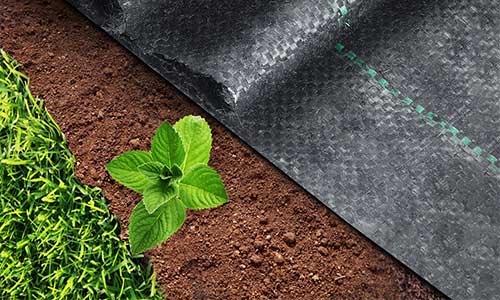
Landscape fabric is another name for the weed barrier. It is a kind of fabric used for gardens that are often made of woven or nonwoven polypropylene.
The most common barrier type is woven. Weeds won’t be able to grow in your garden bed because of its dense mesh structure.
Surprisingly, the weed barrier allows your plants to access water, fertilizer, and air. Therefore, landscape cloth is a wise choice for weed control.
See Also:
Is Using a Weed Barrier in a Vegetable Garden Beneficial?
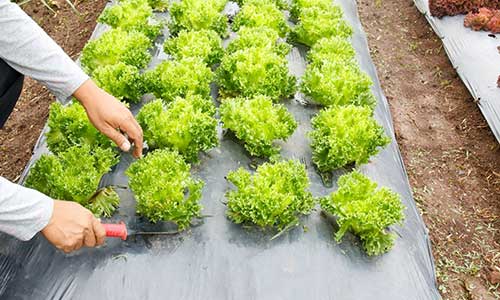
Weed barriers effectively prevent the bulk of weeds and lawn grasses from growing in the garden bed. Due to this, much less weeding is necessary.
You can get rid of weeds depending on the barrier type and how it is installed. Despite surface barriers, weeds may still be able to root in the soil above. In a vegetable garden, this occurrence is typical.
Virtually all weed growth is stopped by barriers laid directly on top of the soil. Additionally, by helping to keep moisture in the soil longer, irrigation is required less frequently.
Typology of Weed Barrier
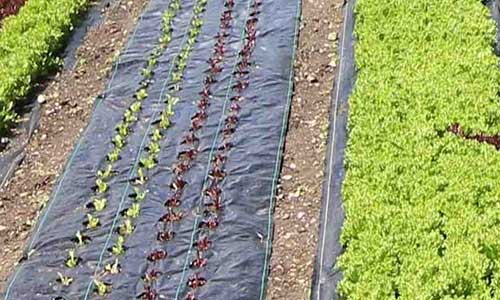
Weed barriers can be of various kinds. Depending on your budget and preference, you can use a wide range of products.
We will look at different weed barriers in this section. Continue reading to find the best-suited weed barrier for your garden.
Also See:
- Top 5 Best Surfactant for Herbicides.
- Top 5 Best Manure for Vegetable Garden.
Physical Weed Barriers
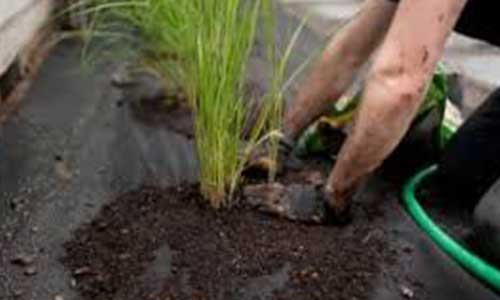
Using physical barriers to discourage weeds from growing is the first line of defense. The most obvious barrier is mulch.
Mulch is inorganic or organic. You can pick either of the variants.
Inorganic mulches don’t hurt the environment, people, or animals. Inorganic mulches include plastic and landscaping fabric. Both are effective weed barriers that cut off air and light to weeds.
The black plastic heats the ground and fries the bugs. If you use black plastic, drill holes in it so water can get to the plants.
Since we are composting fanatics, we want organic barriers that will break down. Our experts assume that if you put something on the soil, it should improve its nutritional value.
Our favorite vegetable garden weed barrier is newspaper. The garden loves newspapers. Other mulch-weed-blockers are compost, straw, wood chips, bark, and shredded leaves.
While you’re killing weeds, mulch keeps your garden’s soil hydrated. Less temperature variation means less watering, less money spent, and less strain on natural resources. Overall, it is a win for everyone.
Our team is thrown by rocks (sorry). We are never sure what category to use. Although rocks are organic, they don’t break down. Whatever category you place them in, rocks make a terrific weed barrier.
Traditional Organic Weed Prevention Techniques
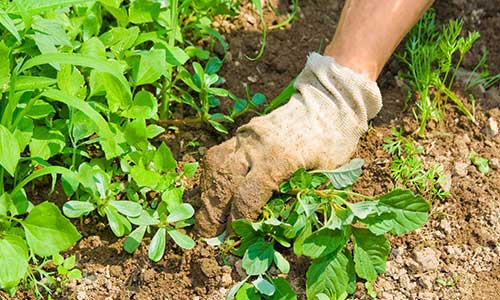
Despite being physically hard, classic weeding techniques have been successful for years. Simply put, traditional hand weeding and frequent hoeing are difficult to replace.
Want to pick your vegetables at their young stage? You can do that with a simple technique.
Simply run the hoe of death across the vegetables each week and you will be good to go. You won’t need to put much work into it, we can assure you that.
But what if you just cannot visit them every week? In such cases, try visiting them as soon as they stop producing seed heads.
When weeds develop and have seeds, plucking them spreads to new generations. Frequent hoeing can put a hold on that.
Another natural weed-killing technique is to liberally apply boiling water to the weed. Even the roots are impacted, which effectively kills them to death.
Take note: Plants die when placed in hot water. Therefore, only a reasonably skilled marksman should use this tactic.
Naked earth produces nothing beneficial. You can use one of the mulches suggestions from above. However, we prefer live mulches like isotoma or creeping thyme.
Once all of your exposed lands are covered, there is scarcely any space left for weeds to occupy. Generally speaking, we are referring to landscaped spaces and perennial beds.
We won’t advocate planting vegetables tightly to cover more ground because that’s blasphemous.
You can also spray the intruders with a solution comprised of 4 cups of vinegar, 1 cup of salt, and 1/2 teaspoon of liquid soap.
Even though it is a successful strategy, there is a drawback to it. The mixture doesn’t have an effect on the weed’s roots. That’s a deal-breaker for us.
Read Also:
- How do you Plant a Weed Seed?
- Is Weed Barrier Safe for Vegetable Gardens?
- How Do You Lay Weed Barrier for a Vegetable Garden?
Things to Consider While Buying Weed Barrier
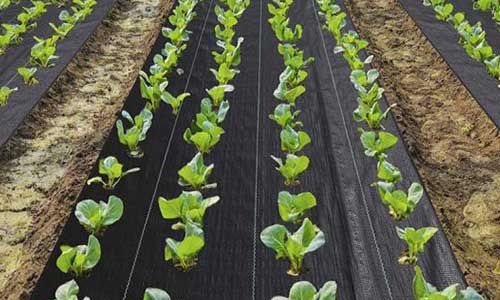
If you are a beginner at using weed barriers, landscape fabric can be a solid pick. It is easy to install and budget-friendly as well.
Despite being simple to install, some growers could make errors that cause crop damage. To ensure a good harvest while using landscape fabric for the first time, you must understand its purpose. This comprises:
Permeability

If you use landscape fabric in a vegetable garden, make sure it won’t restrict air, water, and nutrients.
Brand-specific landscape cloth permeability varies. Thicker, more robust cloth is less porous.
Polyethylene fabrics may be too thick for a garden. Polypropylene textiles can come in handy here.
Size

The actual area that needs to be covered must also be taken into account when installing the landscaping fabric. Make sure the fabric will cover the full region before purchasing it.
In addition, we advise purchasing a little extra. In doing so, gaps between the cloth sheets will be avoided.
The trimmings should ideally be a few inches longer. The material will be secured in situ, which is the reason for it.
Density
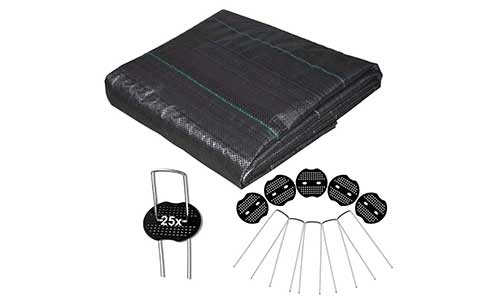
The fabric’s weight and thickness should be your first consideration while purchasing. Thick, robust, and long-lasting landscape cloth is durable and can last for decades.
Plants need adequate space to grow, yet the chemical may wind up stifling the flora. The lifespan of thin landscape cloth, while being permeable, is barely two years.
How Can You Grow Vegetables With a Landscape Fabric?
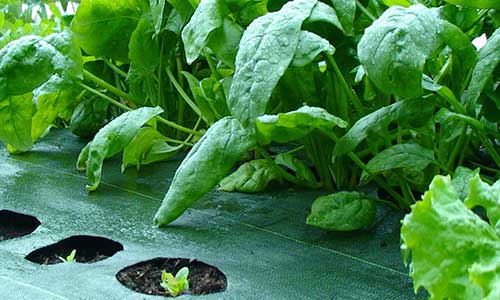
Weeds are prevented from growing and replacing your crops as food sources by landscape fabric. After installation, the landscaping fabric shouldn’t typically be removed for several months.
You might occasionally be cultivating a variety of vegetables. Your crops should have enough room to be planted and replanted.
We recommend you punch holes in the landscape cloth. That will allow you to plant, harvest, and replace crops without much difficulty.
Is the weed barrier harmful to the environment?
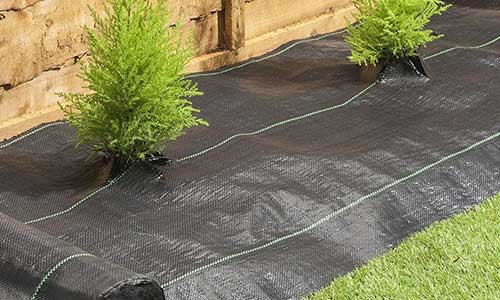
No.
Animals, humans, or the environment are not harmed by inorganic mulches. Landscape cloth and plastic are examples of inorganic mulches. Both are efficient weed barriers that deny weeds access to light and air.
What are the few alternatives for a physical weed barrier?
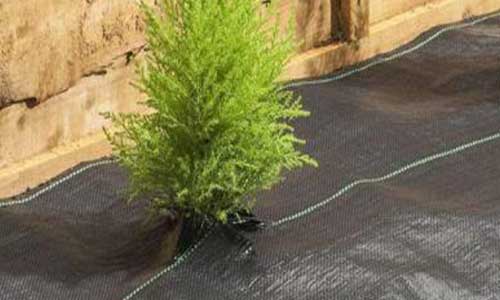
Our favorite vegetable garden weed barrier is newspaper. The garden loves newspapers. Other mulch-weed-blockers are compost, straw, wood chips, bark, and shredded leaves.
Is landscaping fabric customizable?
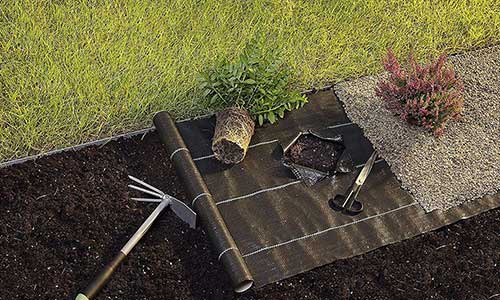
It is possible to tailor either kind of landscaping fabric, regardless of how thick or thin it is.
Instead of using your hands, we suggest using a utility knife or pair of scissors. In this way, precise cuts can be obtained.
How can you grow a vegetable garden using landscape fabric?
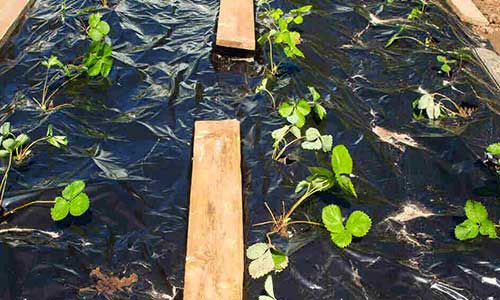
Landscape fabric prevents weeds from growing and eating your crops. Landscape fabric shouldn’t be removed for months after installation.
There should be an adequate area to plant and transplant vegetables. Cutting holes in the landscape cloth lets you sow, harvest, and replant vegetables simply.
Is there any organic fix for stopping weed growth?
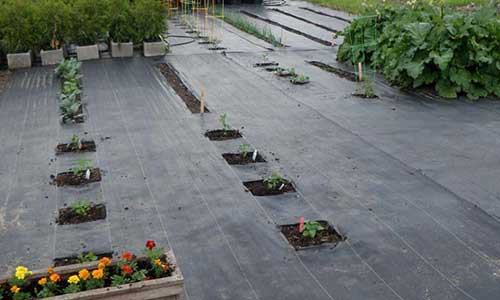
Yes.
For that, you will need to mix 4 cups vinegar, 1 cup salt, and 1/2 teaspoon liquid dish soap. Now, spray the mixture over the intruders and you will be all set.
How frequently should I replace my landscaping fabric?
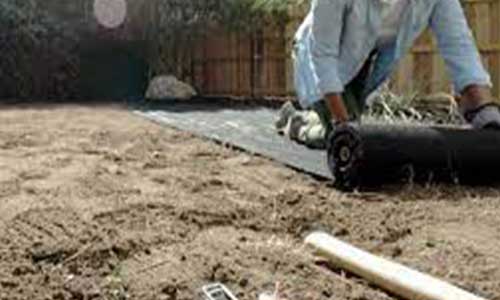
There is no need to replace cloth as long as it is still in good condition and useable. However, it is advised to replace the landscape fabric every two to three years.
What materials are weed barriers in landscaping made of?
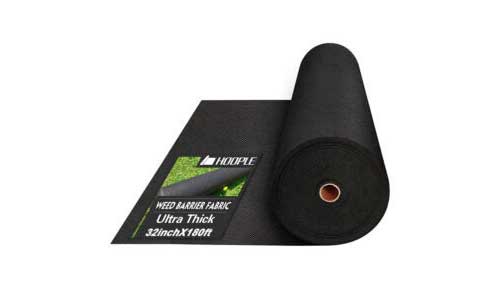
The most common kind of landscape fabric is spun or woven polyester or polypropylene.
Plastic weed barriers are also used by manufacturers. However, it prevents the delivery of either water or nutrients to the plants.
Does Weed Fabric Really Work in the Garden?
Final Words
Crops are shielded by landscape fabric from pests, weeds, and invasive species. If there is enough room for the crops to grow, landscape cloth is safe to use in a vegetable garden.
You’ll be good to go if you make sure the cloth is not preventing the exchange of oxygen, nutrients, and water. The movement of beneficial insects, bacteria, and fungi could be hampered by the fabric. Although it isn’t perfect, it does suppress weeds.

David, the founder of The Garden Fixer, started with a passion for gardening in 2012. He has continued his passion for gardening and desire to improve his skills and wanted to share his journey and helpful knowledge with other like-minded individuals.
He launched The Garden Fixer as an outlet for those interested in learning more about Gardening in hopes they can take what they learn and apply it for themselves!
